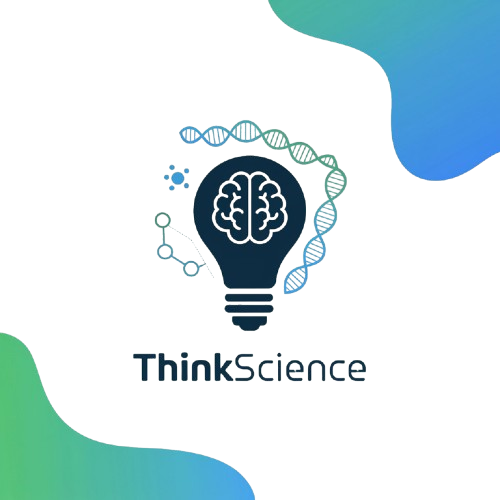Technology has transformed the way we tackle global health crises. In the fight against pandemics, innovative tools and digital solutions play a crucial role. From tracking virus spread to accelerating vaccine development, technology offers powerful resources. This article explores how these advancements help protect public health and save lives. Discover the impact of technology in combating pandemics and learn how it shapes our response to future challenges.
The Evolution of Technology in Healthcare
Technology has transformed healthcare in ways we could only dream of a few decades ago. From the invention of the stethoscope to the development of telemedicine, each advancement has brought us closer to more efficient and effective patient care. As a Public Health Expert, I have witnessed firsthand how these innovations have reshaped our approach to health crises, including pandemics.
From Stethoscopes to Smartphones
In the early days, doctors relied on simple tools like stethoscopes to diagnose patients. These tools were revolutionary at the time, providing insights into the human body that were previously inaccessible. Fast forward to today, and we have smartphones that can monitor heart rates and even detect irregularities. This evolution is not just about convenience; it’s about saving lives. I remember a colleague sharing how a smartphone app alerted a patient to a potential heart issue, prompting them to seek immediate medical attention. This is a prime example of technology’s role in fighting pandemics and other health challenges.
The Impact of Telemedicine
Telemedicine has become a cornerstone of modern healthcare, especially during the COVID-19 pandemic. It allows patients to consult with doctors from the safety of their homes, reducing the risk of virus transmission. I believe this is one of the most significant advancements in recent years. It not only makes healthcare more accessible but also more inclusive. I recall a story of a rural community that, thanks to telemedicine, could access specialists they would otherwise never meet. This is the power of technology in healthcare, bridging gaps and bringing care to those who need it most.
Digital Tools and Data Analytics
In the battle against pandemics, digital tools and data analytics have become indispensable allies. These technologies offer a way to track, analyze, and respond to health crises with unprecedented speed and accuracy. As a Public Health Expert, I have witnessed firsthand how these tools transform our approach to managing outbreaks.
Harnessing the Power of Data Analytics
Data analytics plays a crucial role in understanding the spread of diseases. By analyzing vast amounts of data, we can identify patterns and predict future outbreaks. For instance, during the COVID-19 pandemic, data analytics helped track infection rates and allocate resources effectively. This approach is akin to using a GPS to navigate through a complex city; it provides a clear path in a chaotic environment.
Moreover, digital tools like contact tracing apps have proven invaluable. These apps alert individuals who may have been exposed to the virus, allowing for timely isolation and reducing further transmission. I recall a colleague sharing how a simple notification from a tracing app helped prevent a potential outbreak in their community. Such anecdotes highlight the tangible impact of technology in our fight against pandemics.
Personal Reflections on Technology’s Role
In my opinion, the role of technology in fighting pandemics cannot be overstated. It empowers us to make informed decisions and respond swiftly. However, it’s essential to balance technological advancements with ethical considerations, ensuring privacy and data security. As we continue to innovate, we must remain vigilant in protecting individual rights while leveraging the benefits of data analytics.
Ultimately, the integration of digital tools and data analytics in public health strategies marks a significant step forward. It not only enhances our ability to combat pandemics but also fosters a more resilient and informed society. As we embrace these technologies, we pave the way for a healthier future.
Telemedicine and Remote Monitoring
In recent years, the role of technology in fighting pandemics has become increasingly evident. One of the most significant advancements is the rise of telemedicine and remote monitoring. These tools have transformed how we approach healthcare, especially during global health crises.
Telemedicine: A New Era in Healthcare
Telemedicine allows patients to consult with healthcare professionals from the comfort of their homes. Imagine a mother with a sick child who can avoid a crowded waiting room by connecting with a doctor online. This not only saves time but also reduces the risk of spreading infections. As a public health expert, I believe telemedicine is a game-changer. It provides access to medical care for those in remote areas, where healthcare facilities might be scarce.
Remote Monitoring: Keeping Patients Safe
Remote monitoring is another crucial aspect of technology in fighting pandemics. Devices can track vital signs and alert healthcare providers if something is amiss. For instance, a patient with a chronic condition can have their heart rate and blood pressure monitored in real-time. This proactive approach can prevent complications and hospitalizations. I recall a story of an elderly patient whose life was saved because her wearable device detected an irregular heartbeat. Such innovations are not just convenient; they are lifesaving.
In conclusion, telemedicine and remote monitoring are vital components in the role of technology in fighting pandemics. They offer practical solutions that enhance healthcare delivery and patient safety. As we continue to embrace these technologies, we must ensure they are accessible to all, bridging the gap between patients and healthcare providers.
Vaccine Development and Distribution
In the battle against pandemics, technology plays a crucial role in vaccine development and distribution. As a Public Health Expert, I have witnessed firsthand how innovations have accelerated these processes, saving countless lives. The Role of Technology in Fighting Pandemics cannot be overstated, especially when it comes to ensuring vaccines reach those in need swiftly and efficiently.
Accelerating Vaccine Development
Technology has revolutionized vaccine development. For instance, during the COVID-19 pandemic, researchers used mRNA technology to create vaccines in record time. This was a game-changer. I remember discussing with colleagues how this approach could potentially transform future responses to viral outbreaks. The speed at which these vaccines were developed was unprecedented, and it was technology that made it possible. The Role of Technology in Fighting Pandemics is evident here, as it allows scientists to quickly adapt and respond to emerging threats.
Efficient Distribution Systems
Once a vaccine is developed, distribution becomes the next challenge. Technology aids in this as well. Digital platforms help track vaccine inventory and manage logistics, ensuring that doses reach even the most remote areas. I recall a conversation with a logistics coordinator who shared how GPS technology was used to navigate difficult terrains, ensuring timely delivery. This is where technology truly shines, bridging gaps and making the impossible possible. The Role of Technology in Fighting Pandemics extends beyond labs and into the real world, where it ensures that life-saving vaccines are accessible to all.
Artificial Intelligence and Machine Learning
In the battle against pandemics, technology plays a crucial role. Among the most promising tools are artificial intelligence and machine learning. These technologies have transformed how we predict, track, and respond to outbreaks, offering hope and efficiency in times of crisis.
Understanding the Impact of AI and ML
Artificial intelligence can analyze vast amounts of data quickly. For instance, during the COVID-19 pandemic, AI helped identify patterns in the spread of the virus. This allowed health officials to make informed decisions. I remember reading about a project where AI predicted outbreak hotspots, which was a game-changer for local authorities. It felt like having a crystal ball, offering a glimpse into the future.
Machine learning, on the other hand, learns from data to improve its predictions over time. Imagine a doctor who gets better with each patient they see. That’s what machine learning does with data. It refines its models, becoming more accurate with each iteration. This capability is invaluable in developing vaccines and treatments faster than ever before.
Real-World Applications and Personal Insights
In my experience as a public health expert, I’ve seen how these technologies can bridge gaps in healthcare. During a recent outbreak, a machine learning model helped predict which areas would need more resources. It was like having an extra pair of eyes, guiding us to allocate supplies efficiently. This not only saved time but also lives.
While technology is not a magic bullet, its role in fighting pandemics is undeniable. The combination of AI and ML offers a powerful toolkit. It empowers us to act swiftly and decisively. As we continue to face global health challenges, embracing these technologies will be essential. They are not just tools; they are partners in our quest for a healthier world.
Conclusion
As we reflect on The Role of Technology in Fighting Pandemics, it’s clear that technology has become an indispensable ally. From tracking virus spread to developing vaccines, technology has transformed our approach to public health crises. I remember a time when a simple app on my phone alerted me to potential exposure, a tool that was unimaginable a decade ago.
Technology’s Impact on Public Health
Technology has not only accelerated the pace of medical research but also improved communication between health professionals and the public. For instance, during the COVID-19 pandemic, digital platforms enabled real-time updates and guidance, which was crucial in managing public anxiety. As a public health expert, I believe that these advancements have saved countless lives by providing timely information and resources.
Looking Forward
While technology has proven its worth, it is essential to continue investing in these innovations. The future of public health depends on our ability to harness technology effectively. I am optimistic that with ongoing collaboration between technologists and health experts, we can better prepare for future pandemics. In my experience, the integration of technology in healthcare is not just beneficial; it is necessary for a resilient public health system.






